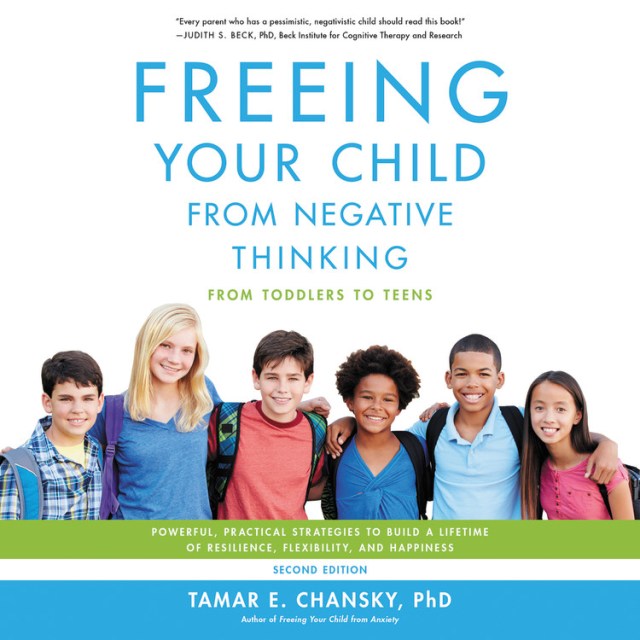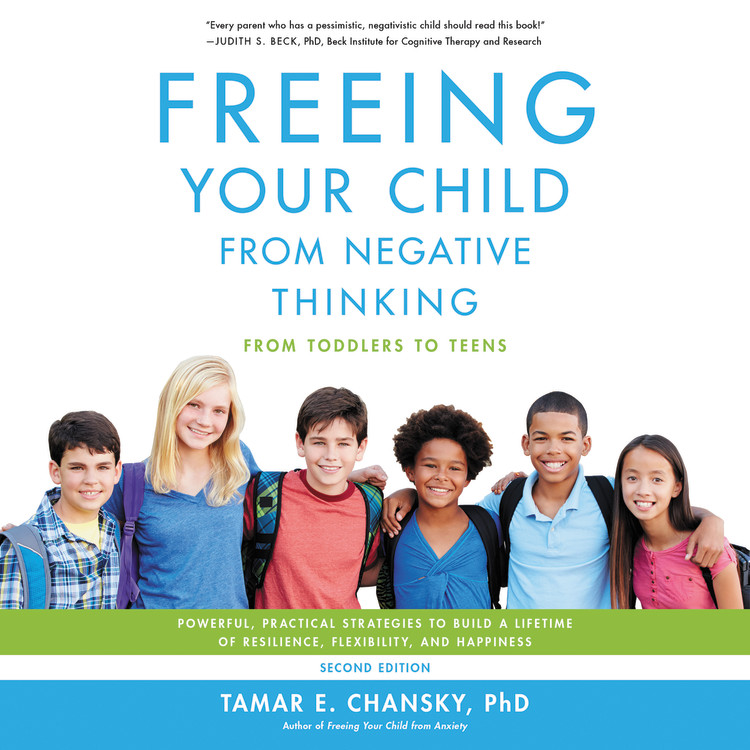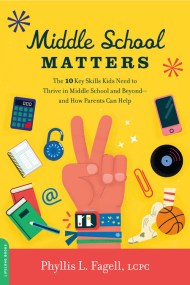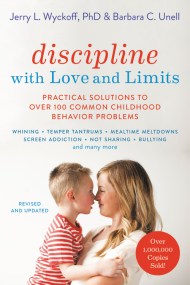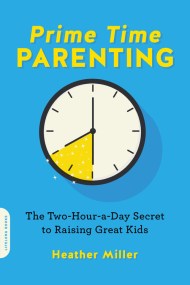Promotion
Use code MOM24 for 20% off site wide + free shipping over $45
Freeing Your Child from Negative Thinking
Powerful, Practical Strategies to Build a Lifetime of Resilience, Flexibility, and Happiness
Contributors
Read by Maggi-Meg Reed
Formats and Prices
Format
Format:
- Audiobook Download (Unabridged)
- ebook $11.99 $15.99 CAD
- ebook $11.99 $14.99 CAD
- Trade Paperback $19.99 $25.99 CAD
This item is a preorder. Your payment method will be charged immediately, and the product is expected to ship on or around January 14, 2020. This date is subject to change due to shipping delays beyond our control.
Also available from:
A leading clinical expert in the fields of child cognitive behavior therapy and anxiety disorders, Dr. Tamar Chansky frequently counsels children (and their parents) whose negative thinking creates chronic or occasional emotional hurdles and impedes optimism, flexibility, and happiness. Now, in the first book that specifically focuses on negative thinking in kids, Freeing Your Child from Negative Thinking provides parents, caregivers, and clinicians the same clear, concise, and compassionate guidance that Dr. Chansky employed in her previous guides to relieving children from anxiety and obsessive compulsive symptoms. Here she thoroughly covers the underlying causes of children’s negative attitudes, as well as providing multiple strategies for managing negative thoughts, building optimism, and establishing emotional resilience.
Genre:
-
Philip C. Kendall, Ph.D., ABPP, Professor of Psychology and Director, Child and Adolescent Anxiety Disorders Clinic, Temple University
"In a clearly readable fashion, Dr. Tamar Chansky combines clever phrasing (for adults) along with "kid speak" to communicate with youth. From her having worked with anxious youth who struggle with all of the possibilities (too many), Dr. Chansky shifts to the negative youth who see no future--the youth who mistake one thing for everything. She walks the reader through discussions that focus on how negative experiences happen to everyone, and that they are 'manageable' and 'temporary'. This book is not a review of the scientific literature, but it is a readable set of guidelines and understandings that are informed by it."
Jeffrey Bernstein, Ph.D., author of 10 Days to a Less Defiant Child
"For every parent who wants their child not to feel bad, here is an excellent book to feel great about. In Freeing Your Child from Negative Thinking, Dr. Chansky abundantly gives parents powerful, easy to apply tools to ensure the emotional health and success of any child. I hope no parent trying to help their child to get ahead misses out on reading this wonderful book packed with valuable advice."
-
Robert Brooks, Ph.D., Faculty, Harvard Medical School and co-author of Raising Resilient Children and Raising a Self-Disciplined Child
"Many youngsters are burdened by self-doubt, negative feelings, and depression. Their lack of confidence and sadness typically trigger feelings of confusion and distress in their parents as the latter struggle to find the best approach to help their children develop a more optimistic, resilient outlook. Tamar Chansky's book Freeing Your Child from Negative Thinking offers a wonderful resource for parents. In a very skillful manner, Dr. Chansky's explains the roots of negative thinking, but most importantly, she offers specific, realistic strategies with actual dialogue that parents can use to minimize their child's negativity. Her empathy and understanding for children and parents is evident on very page of this very readable, practical book. It is a book that parents of children of all ages will read and re-read as they seek to help their children perceive themselves in a more hopeful light." -
Myrna Shure, Ph.D., author of Raising a Thinking Child and Thinking Parent, Thinking Child
"Tamar Chansky gives parents a dynamic approach to helping their children escape thinking badly about themselves and their world?thoughts ranging from mild negativism to clinical depression. Her insightful and creative techniques, based on scientifically grounded cognitive behavior therapy, are, on any given day, helpful not only for parents and their children but for all of us. Next time I want to blame myself for something that went wrong, or feel terrible about something I did, I will open this book and I know I will soon feel better."
Barry Schwartz, author of The Paradox of Choice and Professor of Psychology, Swarthmore College
"Tamar Chansky has distilled cutting-edge research on optimism, pessimism, depression, and resilience into an incredibly thoughtful guide for parents. Her book is full of suggestions about what to look for and what to do (and what not to do) that parents should find engaging and accessible. Reading this book should ease the worries of both parents and their children." -
Judith S. Beck, Ph.D., Director, Beck Institute for Cognitive Therapy and Research and Clinical Associate Professor of Psychology in Psychiatry, University of Pennsylvania
"Tamar Chansky, Ph.D., has done it again-written another incredibly helpful, practical book. Freeing Your Child from Negative Thinking offers specific strategies for parents (or any adult) to use with children and describes variations on these strategies for younger children and older adolescents. Every parent who has a pessimistic, negativistic child should read this book! As parents use the thinking and behavioral strategies that Dr. Chansky recommends, they will undoubtedly find that they themselves are becoming more optimistic and positive, not only toward their child but also more generally in their own lives. I highly recommend this wonderful book."
- On Sale
- Jan 14, 2020
- Publisher
- Hachette Audio
- ISBN-13
- 9781549182600
Newsletter Signup
By clicking ‘Sign Up,’ I acknowledge that I have read and agree to Hachette Book Group’s Privacy Policy and Terms of Use
